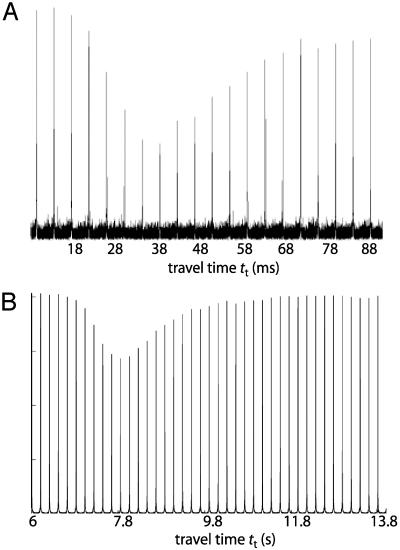Fig. 4.
The travel time curve plots the 129Xe signal amplitude in the detection coil as a function of the flow time. After the magnetization is inverted in the encoding coil, the xenon signal travels from the encoding coil to the detection coil, and the resulting signal amplitude in the detection coil after a given flow time is read out. (A) Both coils are placed inside a high-field magnet (7 T). It takes 28–60 ms for the encoded 129Xe to travel a distance of ≈4 cm from one coil to the other. (B) The encoding coil is placed inside a low-field magnet (4–7 mT), and the detection coil is placed inside a high-field magnet (4.2 T). Here, the encoded 129Xe travels 7–10 s, corresponding to a distance of ≈5 m from one magnet to the other.

